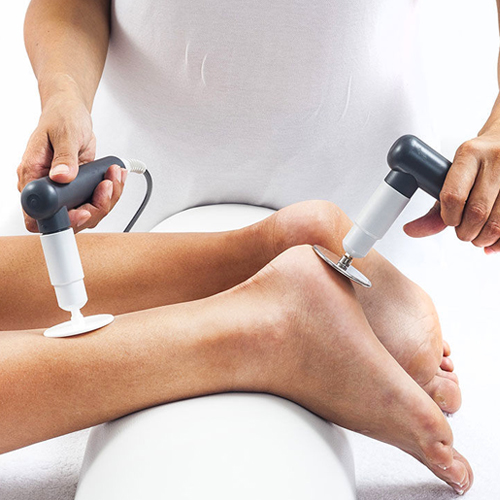TECAR therapy is applied using specialized electrodes placed on the skin by a physiotherapist. A conductive cream or gel is applied to facilitate energy transfer. The therapist moves the electrode in gentle, continuous motions over the affected area, adjusting intensity and mode based on tissue depth and treatment goals.
TECAR Therapy operates through radiofrequency energy, usually in the range of 300 kHz to 1.2 MHz. When applied to the body via specialized electrodes, this energy causes ions within the tissues to oscillate, generating endogenous (internal) heat and cellular stimulation.
- Microcirculation
- Lymphatic drainage
- Cell metabolism
- Tissue oxygenation
These effects accelerate the repair of muscles, tendons, ligaments, and joints, and reduce pain and stiffness.
TECAR Therapy uses two complementary modes depending on the type and depth of the tissue being treated
- Capacitive Mode (CET):Targets superficial soft tissues like muscles and skin.
Uses an insulated electrode.
Ideal for increasing blood flow, relaxing muscles, and reducing superficial inflammation.
- Resistive Mode (RET):Targets deeper and denser tissues like tendons, ligaments, bones, and joints.
Uses a non-insulated electrode.
Effective for chronic inflammation, fibrosis, joint stiffness, and deep pain.
Session Guidelines
- Duration:Typically 15–30 minutes per session
- Frequency:2–4 sessions per week based on the condition.
- Course:Acute injuries may need 4–6 sessions, while chronic issues may require 8–10 sessions.
The physiotherapist customizes the treatment plan based on diagnosis and patient response.


